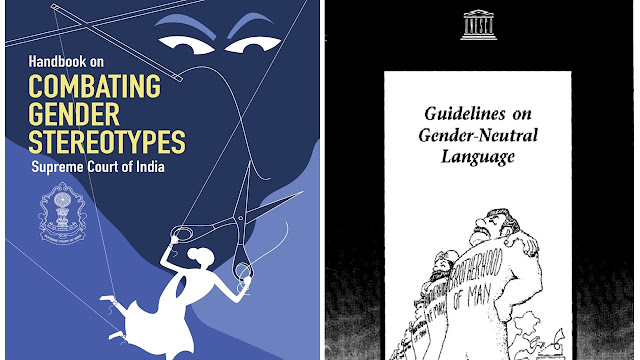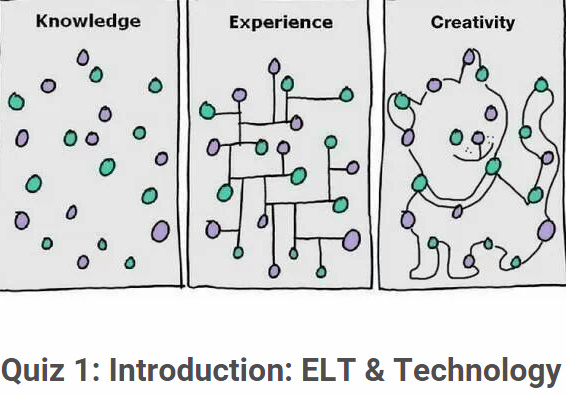Gender and Language: Challenging Stereotypes and Fostering Inclusion
Dilip Barad
Introduction
Language is a powerful tool that not only reflects our thoughts but also shapes them. It carries the potential to reinforce or challenge societal norms, including those related to gender. In the pursuit of equality and justice, both UNESCO and the Supreme Court of India recognize the crucial role of language in combating gender stereotypes. UNESCO's 1999 Guidelines on Gender-Neutral Language and the Supreme Court of India's 2023 Handbook on Combating Gender Stereotypes provide valuable insights into reshaping our language to create a more inclusive and equitable society.
UNESCO's Guidelines on Gender-Neutral Language
UNESCO's commitment to justice and non-discrimination in education is evident in its call to transform behavior and attitudes that perpetuate the social exclusion of women. One of the fundamental aspects addressed by UNESCO is the use of gender-neutral language. The organization acknowledges that language is not merely a reflection of our thoughts but also influences them. When language perpetuates the assumption of male superiority, it becomes imperative to adapt our language as our ideas evolve. Ambiguous language that defaults to male imagery or perpetuates stereotypes can inadvertently contribute to bias, discrimination, and demeaning perceptions. By urging individuals to be more mindful of their language choices, UNESCO emphasizes the importance of precision and sensitivity in communication.
The Supreme Court of India's Handbook on Combating Gender Stereotypes
The Supreme Court of India's 2023 Handbook serves as a beacon for the legal community, specifically judges, in challenging harmful gender stereotypes. It recognizes that stereotypes often find their way into our thoughts and expressions due to societal conditioning. While acknowledging the inevitability of encountering stereotypes, the handbook stresses the significance of identifying and addressing them to foster an equal and inclusive society. In the realm of judiciary, the handbook underscores the pivotal role judges play in combating stereotypes. Relying on stereotypes in judicial decision-making distorts the objective application of the law, perpetuating discrimination and exclusion.
The handbook takes a three-pronged approach to address gender stereotypes:
Language Transformation: The handbook provides guidance on identifying language that reinforces stereotypes and offers alternative words and phrases that promote gender neutrality. By consciously choosing words that encompass all genders, the judiciary can contribute to dismantling stereotypes deeply ingrained in language.
Challenging Reasoning Patterns: The handbook sheds light on common reasoning patterns rooted in gender stereotypes, particularly concerning women, and explains why they are flawed. This empowers judges to critically assess their judgments and decisions, ensuring they are free from the influence of prejudiced notions.
Precedents and Rejecting Stereotypes: The handbook highlights binding decisions by the Supreme Court of India that have explicitly rejected gender stereotypes. Judges can draw from these cases to counter stereotypes in their decisions and writings, thereby contributing to a more impartial application of the law.
Conclusion
Language shapes our perceptions and attitudes, and its power can be harnessed to dismantle harmful gender stereotypes. The combined efforts of organizations like UNESCO and the judiciary, as exemplified by the Supreme Court of India's handbook, underscore the importance of language as a catalyst for change. By choosing words thoughtfully, challenging biased reasoning, and drawing from legal precedents, we can collectively pave the way for a more equitable, inclusive, and compassionate society where gender-neutral language reflects and reinforces the principles of justice and equality.
References:
Cameron, D. (2007). The Myth of Mars and Venus: Do Men and Women Really Speak Different Languages? Oxford University Press.
Eckert, P., & McConnell-Ginet, S. (2003). Language and Gender. Cambridge University Press.
Holmes, J. (2008). Gendered Talk at Work: Constructing Gender Identity Through Workplace Discourse. John Benjamins Publishing.
Hyde, J. S. (2005). The Gender Similarities Hypothesis. American Psychologist, 60(6), 581-592.
Lakoff, R. T. (1975). Language and Woman's Place. Language in Society, 2(1), 45-80.
Mills, S. (2003). Language and Gender: Interdisciplinary Perspectives. Routledge.
Shaw, S. (2020). Women, Language and Politics. India: Cambridge University Press.
Spender, D. (1980). Man Made Language. Routledge & Kegan Paul.
Supreme Court of India. (2023). Handbook on Combating Gender Stereotypes. https://www.supremecourt.gov.in/pdf/gender-stereotype-handbook.pdf.
UNESCO. (1999). Guidelines on Gender-Neutral Language. http://www.unesco.org/education/pdf/GENDER_E.PDF.
Tannen, D. (1990). You Just Don't Understand: Women and Men in Conversation. William Morrow.








